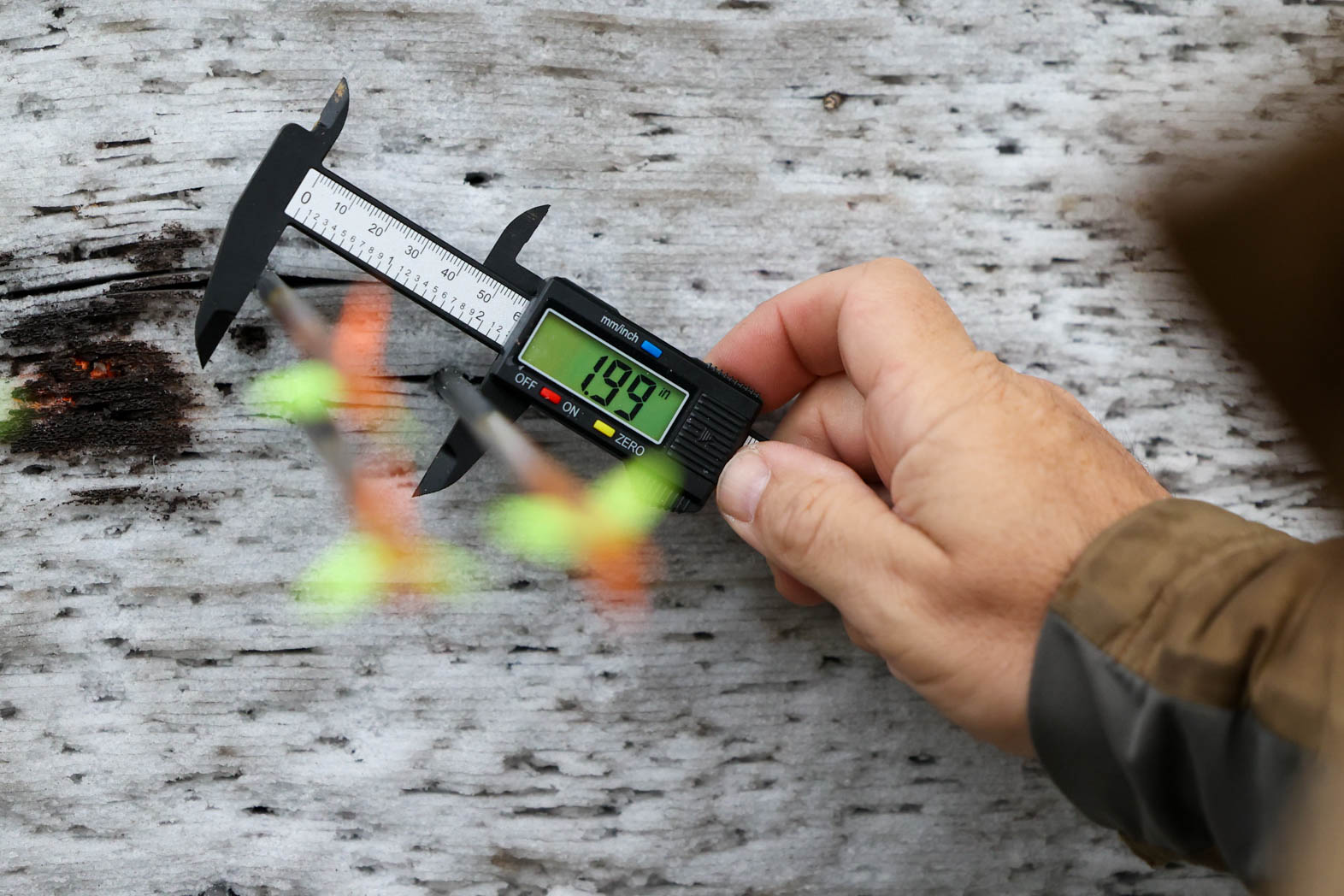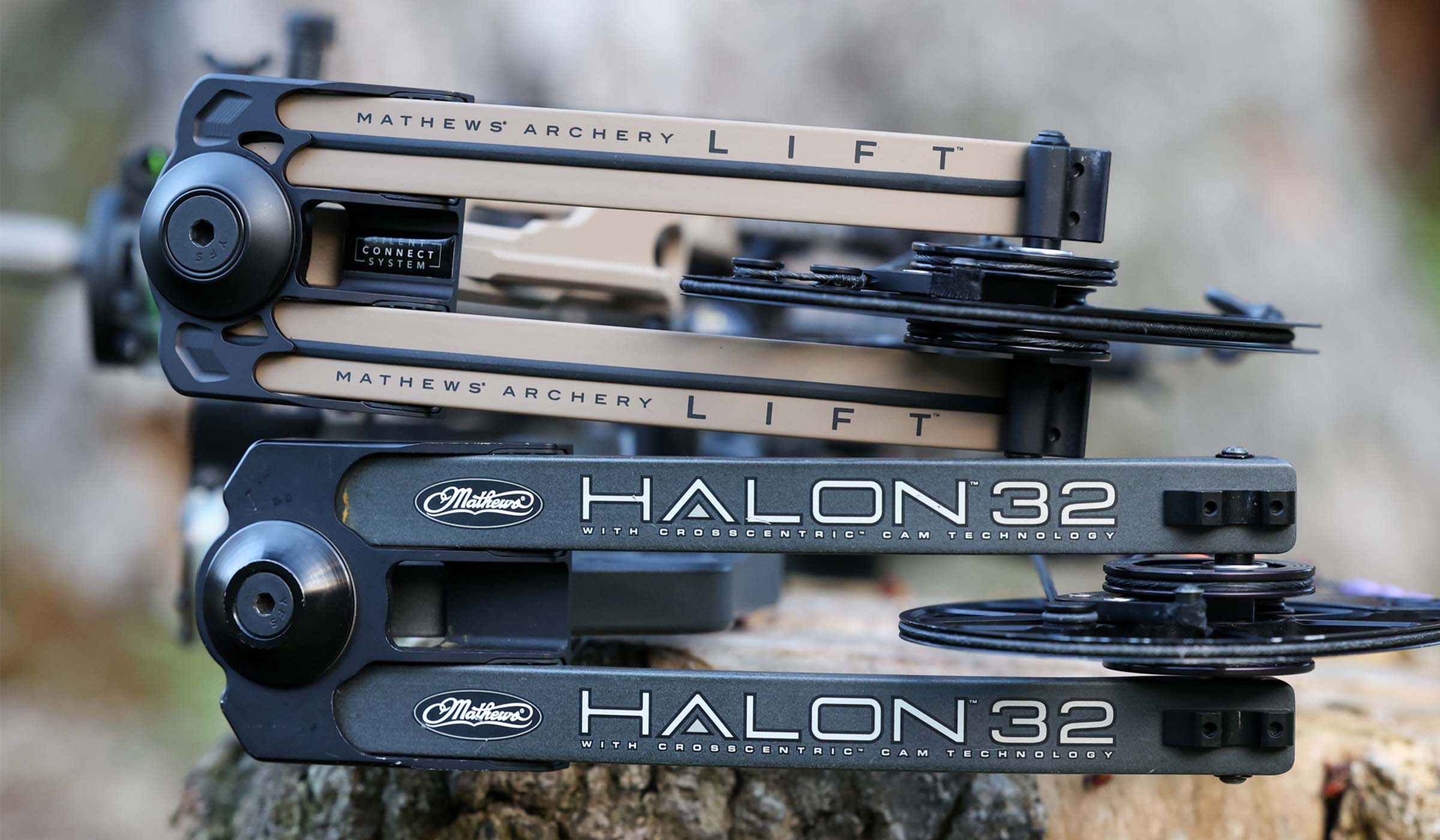Compound bows went through a period of rapid development where they constantly improved year-to-year. But like all technology, there was bound to be a limit to the advancement. That happened about ten years ago when compounds became incredibly fast, smooth, and easy to tune. We’ve since seen marginal, but meaningful improvements. Like better tuning systems, accessory mounting, and the wide adoption of the binary cam. At the same time, bows have gotten wildly more expensive.
The incremental progress and notable price jump leaves bow buyers in a tricky spot. Do you upgrade your five-year-old bow or stick with old reliable?
At this year’s bow test we set out to help you answer that question by including a 2017 Mathews Halon 32 in our test. It went through the exact same protocol as the latest flagship bows, which allows us to give you a direct performance comparison.
Testing Protocol
Photo by Natalie Krebs
We strive for consistency in testing, and use the same arrows, rests, and sights on all bows for our annual bow test. But, we couldn’t control all the variables with the used Halon 32. It had new, aftermarket string/cables, a different (still good) sight, and it had an aftermarket grip that was installed by the owner. The accuracy testing was done without a stabilizer for all bows.
We replicate the pro shop buying experience by shooting bows at 5 feet and scoring them on their draw cycle, vibration, back wall, features, grip, and build quality. Each category is scored one to five (five is the best) for a perfect cumulative score of 30 points.
Speed
We shot bows at 60 pounds +/- .5 pound and a 29-inch draw length. The same 408-grain Black Eagle Spartan we used for accuracy testing was shot over a Garmin Xero C1 chronograph three times to give us our speed specs.
Accuracy
Three shooters each recorded two, three-shot groups at 50 yards with all of the bows. The groups were measured and averaged.
Read Next: The Best Compound Bows
The Results
| Bow | Speed (3 Shot Average) | Average 5-Foot Score | Average 50-yard Group |
| Mathews Halon 32 | 284 fps | 18 | 4.6 inches |
| PSE Mach 30 DS | 281 fps | 25 | 2.04 inches |
| Mathews Lift | 283 fps | 22 | 2.55 inches |
| Hoyt RX-8 HBX Xact | 274 fps | 26 | 3.23 inches |
| PSE Evolve 33 DS | 274 fps | 24 | 2.59 inches |
| Hoyt Alpha X 33 | 276 fps | 24 | 3.23 inches |
| Elite Kairos | 277 fps | 21 | 3.33 inches |
| Elite Ethos | 278 fps | 21 | 3.41 inches |
| Darton Sequel 31 | 276 fps | 23 | 3.58 inches |
| Bowtech Core SR | 277 fps | 22 | 4.7 inches |
Accuracy

Natalie Krebs
The nine 2024 flagships averaged a 3.18-inch group, which is 1.5 inches smaller than the Halon’s 4.6-inch average. It did beat out the Bowtech Core SR for accuracy though.
One thing that could have held it back was the aftermarket grip that was on the bow, which all the testers felt was too thin and easy to torque. Would a different grip make up that 1.5-inch difference? That’s tough to say definitively, but what we can say is that the older bow, for the most part, shot really well. A 4.6-inch group at 50 yards is impressively good and makes the Halon just as capable of a hunting bow in 2024 as it was in 2017.
Read Next: Crossbow vs Compound
The Halon finished far behind the new bows in our five-foot test. We’ve tested a lot of bows over the last three years that are easy to draw and still have good performance. Engineers have made cams more efficient so they can get speed without affecting the draw cycle. In the not too distant past, manufacturers primarily produced high speeds with aggressive, tear-drop cams and short brace heights. That meant fast bows, like the Halon, were a pain to draw.

Photo by Natalie Krebs
The Halon reminded the testers of how far vibration dampening has come in the last seven years. It scored an average of 2.5 out of 5 for its post-shot experience. “It has a good bit of vibration and string slap,” said tester P.J. Reilly.
By comparison, the 2024 bows mostly all earned a 4 in that category with the Hoyt RX-8 achieving a perfect score for its unbelievably-still post shot.
Today’s bows achieve vibration reduction in a number of ways. For example Mathews places a thin strip of rubber between each of the four limbs to cut down hand buzz. PSE has their Dead Frequency carbon, which makes it possible to have a very light bow without much vibration. Of course, efficiency also helps because the more energy that goes into the arrow, means less that goes into your hand. That’s important because the bow will be quieter and more enjoyable to shoot with little vibration.
The features that are available on new bows are far superior to those offered on bows from even five years ago. You have the incredible tuning systems on Elite and Bowtech bows that make adjusting cam lean a breeze. You also have all the new accessory mounting options for a streamlined rig. Then there’s unique features like Mathews’ Stay Afield portable bow press.
On the positive side, the Halon scored well for its solid back wall and build quality. Testers noted that there was zero creep once the stops hit. It was easy to hold at full draw.
Speed
One of the most interesting test results was that the Halon 32 was the fastest bow tested. It was even a hair faster than the Mathews Lift, a modern speed bow. Of course, the Lift is objectively nicer to shoot.
Final Thoughts on New Bows vs Old Bows

Photo by Natalie Krebs
In our sample size of one old bow, we can see that bows haven’t gotten much, if at all, faster and companies continue to produce bows with solid back walls. Where we do see a difference is in features, the ease of shooting good groups, and overall shooting experience.
Today’s bows don’t come with as many compromises as older bows did. This year’s editor’s choice winner, the PSE Mach 30 DS, is a light bow that has little vibration, a smooth draw, robust feature set, good speed, and shot incredibly small groups for three different archers. You used to have to choose a few of those qualities, and could only dream of packing them all into one bow.
Read Next: Are Flagship Bows Really Worth the Money?
The Mach 30 DS does cost $1,800 though. A Mathews Halon 32 can be bought used for $600 to $650, so even if you add new strings you’re at half the cost of a Mach 30 DS and about $500 less than a Mathews Lift. Buying a used flagship seems to pencil out pretty favorably. Then again if you’re selling your old bow to fund a new one, it’s not such an astronomical purchase anymore and you’ll be pleasantly surprised by how much better the shooting experience is.
Read the full article here




